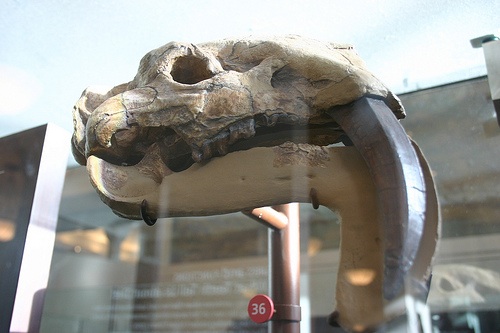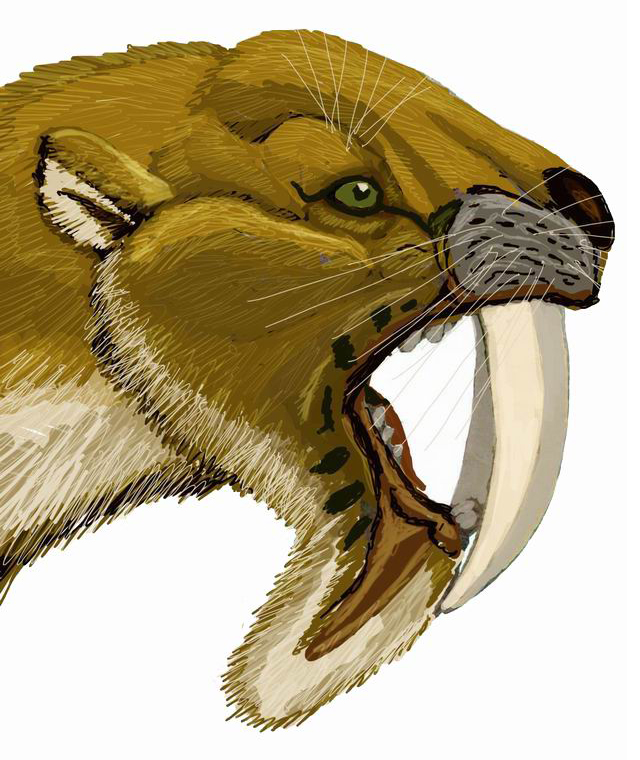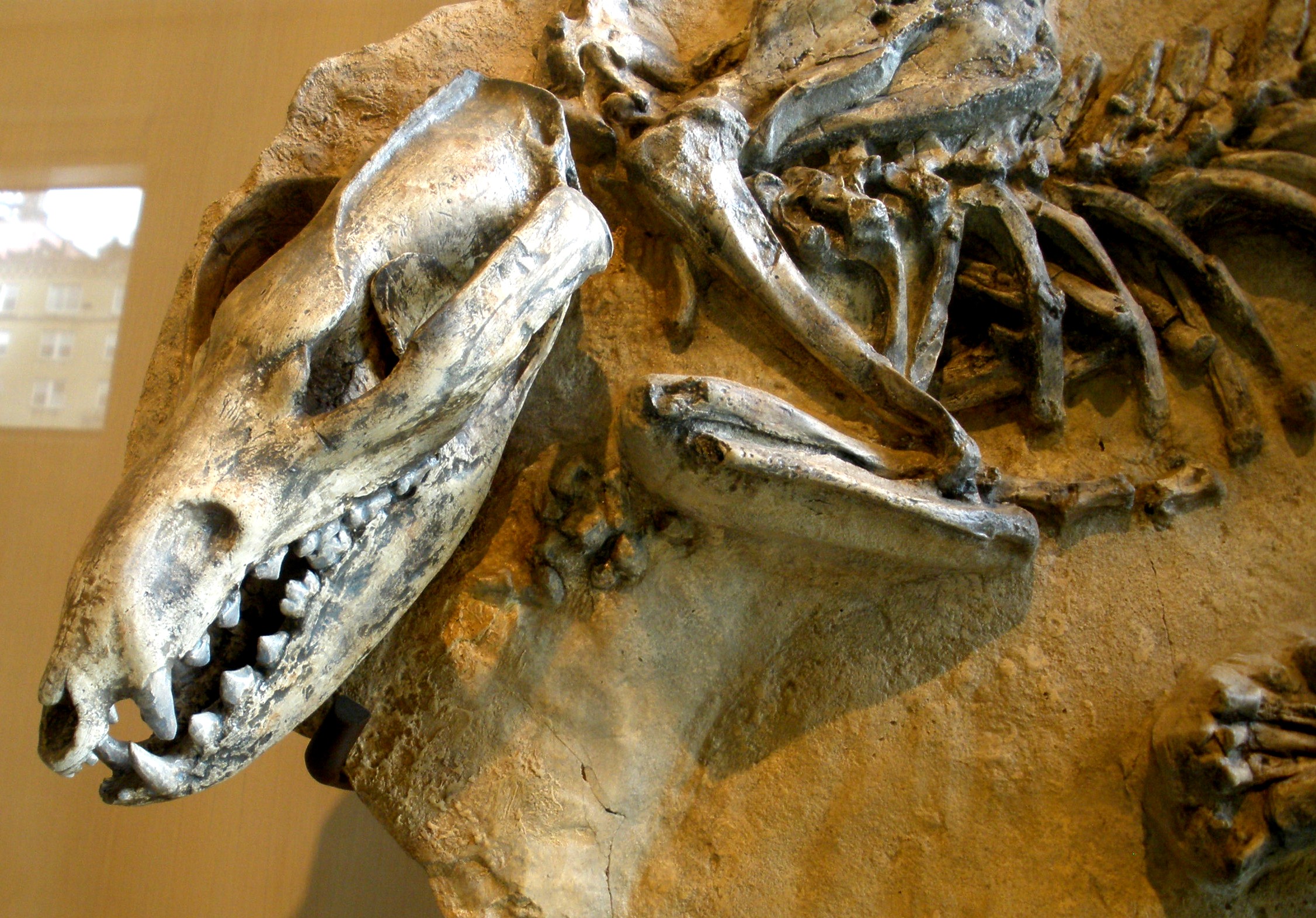Sparassodonta -- Extinct Sabretoothed Marsupials
Borhyaenidae -- Hondadelphidae -- Mayulestidae



Origins
Sparassodonta is an extinct order of carnivorous metatherians mammals native to South America. They were once considered to be true marsupials, but are now thought to be a sister taxon to them. A number of these mammalian predators closely resemble placental predators that evolved separately on other continents, and are cited frequently as examples of convergent evolution. They were first described by Florentino Ameghino, from fossils found in the Santa Cruz beds of Patagonia.
The famous one, who graces this pages title,Thylacosmilus ("pouch sabre"), was a genus of sabre-toothed metatherian predators that first appeared during the Miocene. Remains of the animal have been found in parts of South America, primarily Argentina. It was not a relative of the true saber-tooth cat, but rather a prime example of convergent evolution.
Physical Characteristics
Thylacosmilus had long, sabre-like upper canines and short, blunt, peg-like lower canines. The incisors were missing altogether and the other teeth were severely reduced, but, as distinct from machairods, their number was complete.Thylacosmilus' sabre-teeth kept growing throughout its life, unlike the sabres of true saber-tooths. It also had a pair of elongated, scabbard-like sheaths growing from the lower jaw, which protected the sabre-teeth when it closed its mouth. The cervical or neck vertebrae were very strong.
The borhyaenids, members of the Borhyaenidae family were a carnivorous group of otter/wolverine-shaped marsupials in the order Sparassodonta. They lived in the Miocene of South America. Like most metatherians, they had a pouch to carry their offspring around. Borhyaenids had strong and powerful jaws, like those of Hyaenodon and Andrewsarchus, for crushing bones. They grew up to 5 or 6 feet long. Borhyaena was a member of this group. Today, the Tasmanian Devil, a scavenging marsupial from Tasmania, most resembles them.
Geographic Distribution
We know that some fossils were found in Patagonia and then in other places in South America. What is unclear is where this particular order actually began.
Extinction
This order underwent an early and extensive adaptive radiation before the divergence of the order Didelphimorphia. The extinction of the Sparassodonta is believed to be due to competition with Didelphimorphia and large carnivorous birds of the time. The diet of all known members of this order was obviously carnivorous, and many known species show examples of convergent evolution with other mammalian species. For example, Thylacosmilidae shows similarities to the placental sabre tooth tiger, whilst Borhyaenidae shows similarities to the Australian marsupial family Thylacinidae. There are also some bear-like forms, which may have been the largest known marsupial carnivores. Fossils of organisms from this order were the first extinct marsupials described.